1. 安装轻量级网络仿真工具Mininet
源码安装代码如下
git clone https://github.com/mininet/mininet.git
cd mininet/util
./install.sh
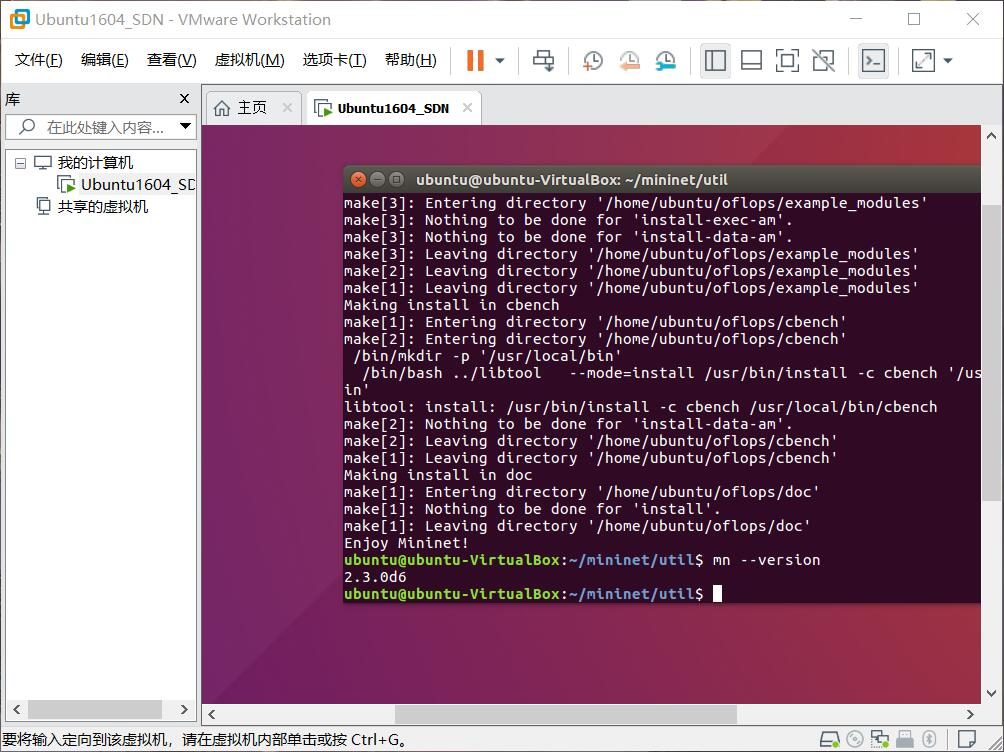
2. 用字符命令搭建如下拓扑,要求写出命令
sudo mn --topo linear,3

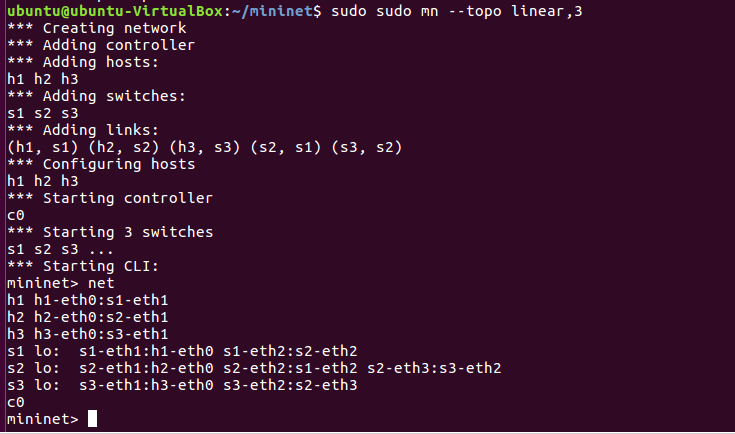
sudo mn --topo tree,fanout=3,depth=2
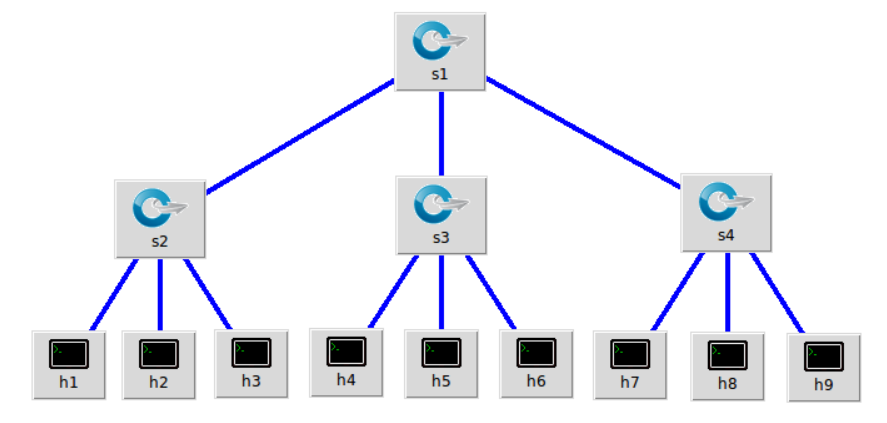

3. 利用可视化工具搭建如下拓扑,并要求支持OpenFlow 1.0 1.1 1.2 1.3,设置h1(10.0.0.10)、h2(10.0.0.11)、h3(10.0.0.12),拓扑搭建完成后使用命令验证主机ip,查看拓扑端口连接情况。
cd mininet
cd examples
sudo ./miniedit.py


4. 利用Python脚本完成如下图所示的一个Fat-tree型的拓扑(交换机和主机名需与图中一致,即s1s6,h1h8,并且链路正确,请给出Mininet相关截图)
python代码如下
#!/usr/bin/python
#创建网络拓扑
"""Custom topology example
Adding the 'topos' dict with a key/value pair to generate our newly defined
topology enables one to pass in '--topo=mytopo' from the command line.
"""
from mininet.topo import Topo
from mininet.net import Mininet
from mininet.node import RemoteController,CPULimitedHost
from mininet.link import TCLink
from mininet.util import dumpNodeConnections
class MyTopo( Topo ):
"Simple topology example."
def __init__( self ):
"Create custom topo."
# Initialize topology
Topo.__init__( self )
L1 = 2
L2 = L1 * 2
#L3 = L2
c = []
a = []
#e = []
# add core ovs
for i in range( L1 ):
sw = self.addSwitch( 's{}'.format( i + 1 ) )
c.append( sw )
# add aggregation ovs
for i in range( L2 ):
sw = self.addSwitch( 's{}'.format( L1 + i + 1 ) )
a.append( sw )
# add links between core and aggregation ovs
for i in range( L1 ):
sw1 = c[i]
for sw2 in a[i/2::L1/2]:
# self.addLink(sw2, sw1, bw=10, delay='5ms', loss=10, max_queue_size=1000, use_htb=True)
self.addLink( sw2, sw1 )
#add hosts and its links with edge ovs
count = 1
for sw1 in a:
for i in range(2):
host = self.addHost( 'h{}'.format( count ) )
self.addLink( sw1, host )
count += 1
topos = { 'mytopo': ( lambda: MyTopo() ) }
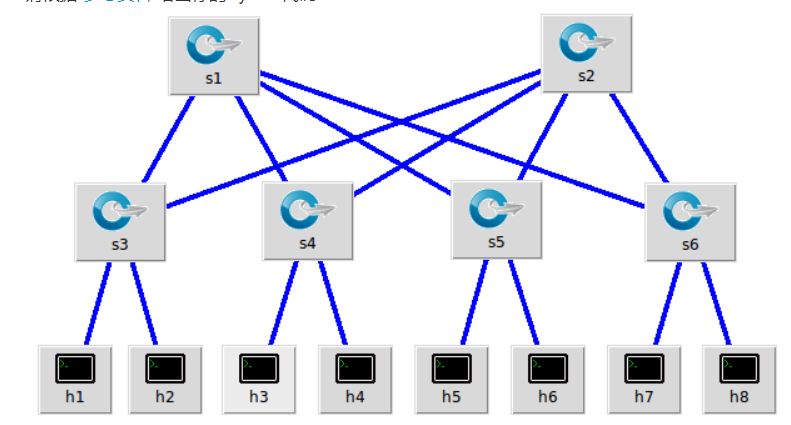
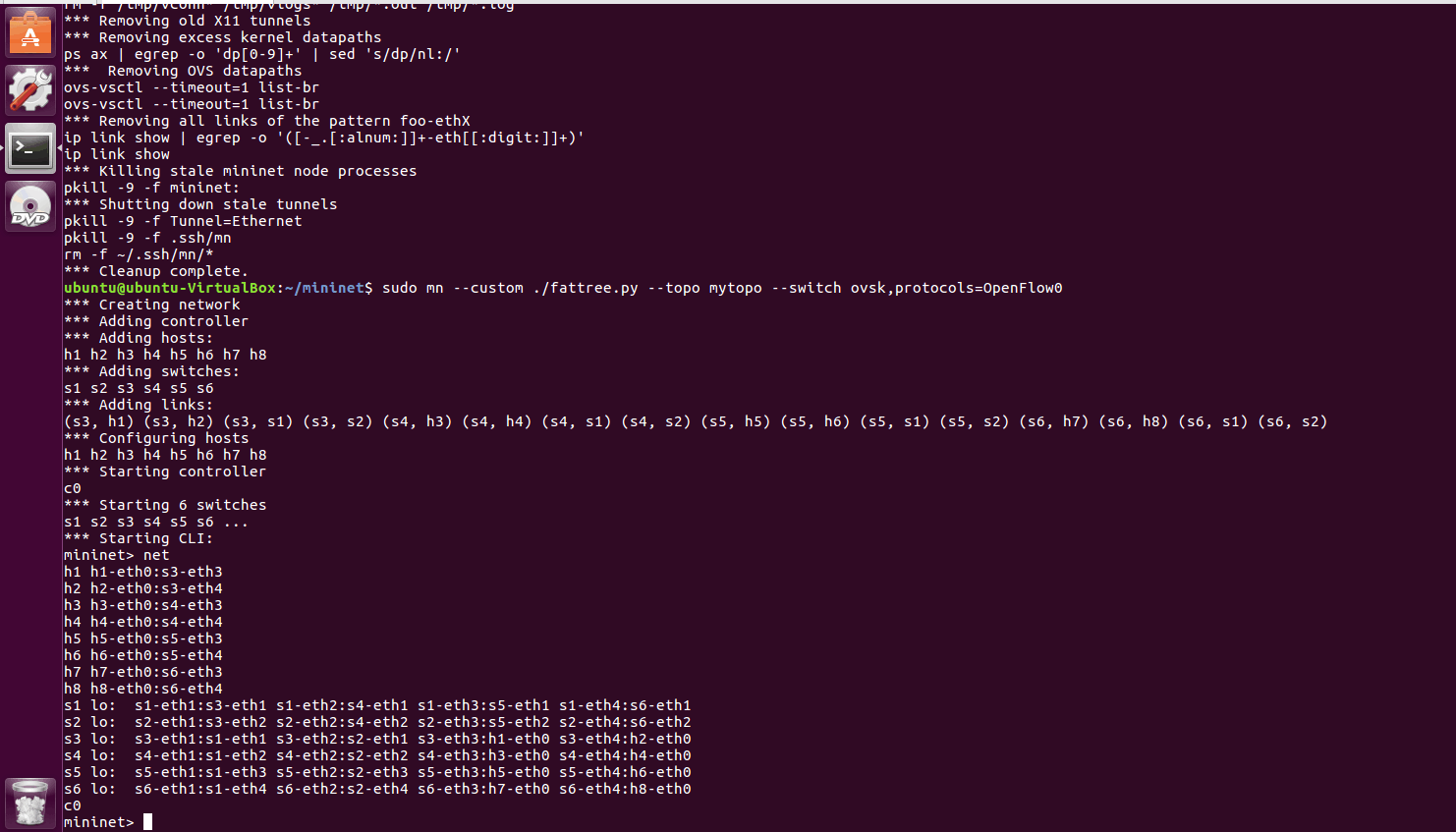
实验总结
本次实验较为简单,基本上按照给定的操作按部就班,配置好合适的环境就可以顺利完成作业。不过一不小心还是很容易出错的,诸如
1:没有sudo mn -c导致出现文件已存在;
2:当执行sudo ./install.sh后执行一段程序后出现错误:
Cloning into ‘openflow’…
fatal: read error: Connection reset by peer
出现这个错误是因为在install.sh中存在的git下openflow的地址失效了
解决方案:
sudo gedit install.sh
找到openflow的安装地址git clone git://openflowswitch.org/openflow.git
将其修改为git clone git://github.com/mininet/openflow
保存重新执行install.sh即可。